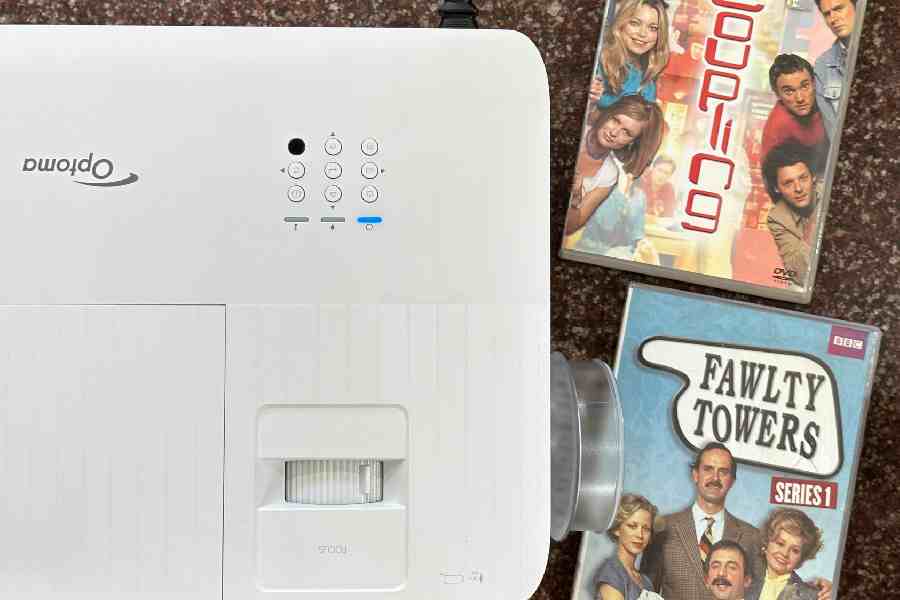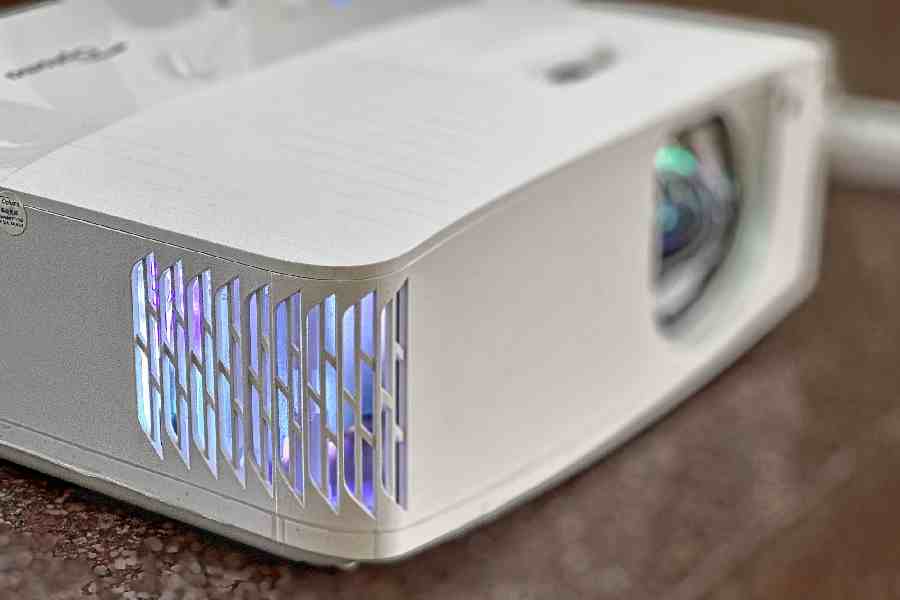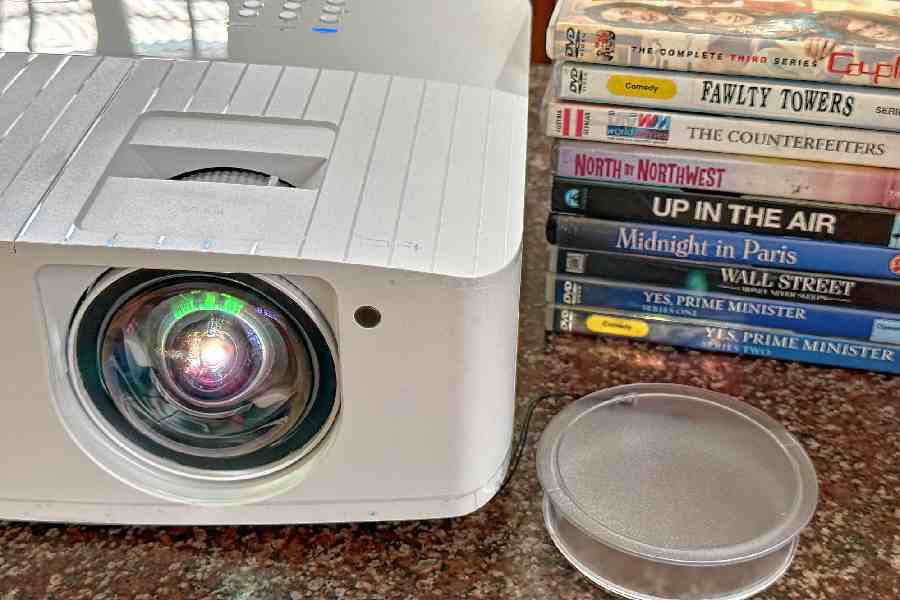Besides movies, live sports and gaming are two of the major reasons we want a huge screen. With short-throw projectors, you get a huge image but the projector only needs to be between 1-2.5m away from the screen. Traditional projectors, however, need around four to five meters for the light to pass through a lens and fill a screen. Short-throw models reduce this distance by reflecting light off internal mirrors before it goes through a lens, creating the same big image but much closer to the screen. And that makes Optoma GT2160HDR convenient for small rooms or other situations where space is limited.
There are a few things to remember about Optoma projectors. First, it’s a mano-a-mano battle between Optoma and the likes of BenQ and Epson. Second, it’s more affordable than most brands and third, colours are usually stunning. The GT2160HDR — certainly a mouthful — is a 4K UHD short-throw cinema/gaming projector, which should last several years.
Reasonably easy setup
The Optoma projector can be kept on a table quite close to the screen to project images up to 300 inches but I would recommend you keep it within 150-180 inches for the best results. If you want to change the size of the image, simply move the projector and manually focus the image. There is a manual keystone function — horizontal and vertical of =/- 20 degrees and there is digital zoom. It’s a reasonably simple setup.
Personally, I don’t have a projection screen, so I have to depend on large off-white walls. In case you want to watch everything using a projector, get a screen. A screen has less texture, allowing you to enjoy accurate colours. Paint will almost always reflect less light than a screen. In other words, the image will appear dimmer. If you buy a screen, it should last through multiple projectors before needing replacement.
Colours are well-tuned
To produce a smooth picture, both TVs and projectors need a high refresh rate. This is how many times a new image can be drawn every second and the Optoma offers up to 240Hz, which is particularly helpful while gaming. Looking at details, you will see motions a lot better using this projector. Personally, I need a projector that can do justice to a football match as well as movies.

All the controls for the projector are on the top

Though the remote control has all the important functions, the build quality needs to improve

For heat dispersion, there is enough ventilation

The lens comes with a protective cover
What GT2160HDR offers is brightness of 4,000 lumens and 1,200,000:1 contrast ratio. Like I said, it’s a True 4K UHD projector, powered by Texas Instruments 4K UHD DLP Chipset featuring a high-performance DMD utilising XPR video processing technology with fast switching to display 8.3 million pixels.
The colours are well calibrated out of the box and adjusting technologies exceeds HDTV Rec. 709 standards to present accurate colours. Watching films in full HD is a joy. Colours actually seem to pop off the screen. Optoma has one of the most pleasing colour ranges; the reds in particular seem to come out well. It performs well against the likes of BenQ. The same goes for picture sharpness.
The GT2160HDR supports HDR10 and HLG. The former is one of the first HDR standards specifying 10-bit colour support while HLG is a broadcast HDR format that has lower bandwidth and is backwards compatible with SDR. When an HDR/HLG signal is imported, the projector automatically switches to HDR / HLG display mode.
The blacks produced by this projector can be inky. With auto gain function, details are more pronounced and an increase in contrast ratio of nearly three times is achieved. It’s quite lifelike.
Where things shine is while gaming. GT2160HDR supports two HDMI 2.0 for any external 4K devices, like Apple TV 4K, PS4 Pro, and Xbox One X. With 240Hz refresh rate, you will get excellent picture quality and almost zero motion blur, making it suitable for playing games. To get the most out of the projector, move into ‘game’ display mode, which will allow you to see details hiding in dark areas. Input lag? If you are at 1080p@240Hz, it’s 4ms, 1080p@120Hz takes it to 8.6ms and 4K@60Hz takes it to 16.7ms. To hit minimum response time, when using enhanced gaming mode, features like keystone correction, image shift, and edge mask will be disabled.
Should you buy it?
Sure, I would like to see the interface to be slightly spruced up but the colour balance achieved on this projector is close to what you get on more expensive models. With 4,000 lumens of brightness, the projector can display an image that looks good even when the room is not entirely dark. The lens is rated at F# 2.8, f 7.51mm with a 0.496 throw ratio, meaning it can show something like 120-inch images from as close as 1.2 metres or around four feet. There is a 10W speaker on the machine but the tuning can be ever so slightly better, with more emphasis on dialogues. Overall, Optoma GT2160HDR delivers a high-quality cinema and gaming experience.